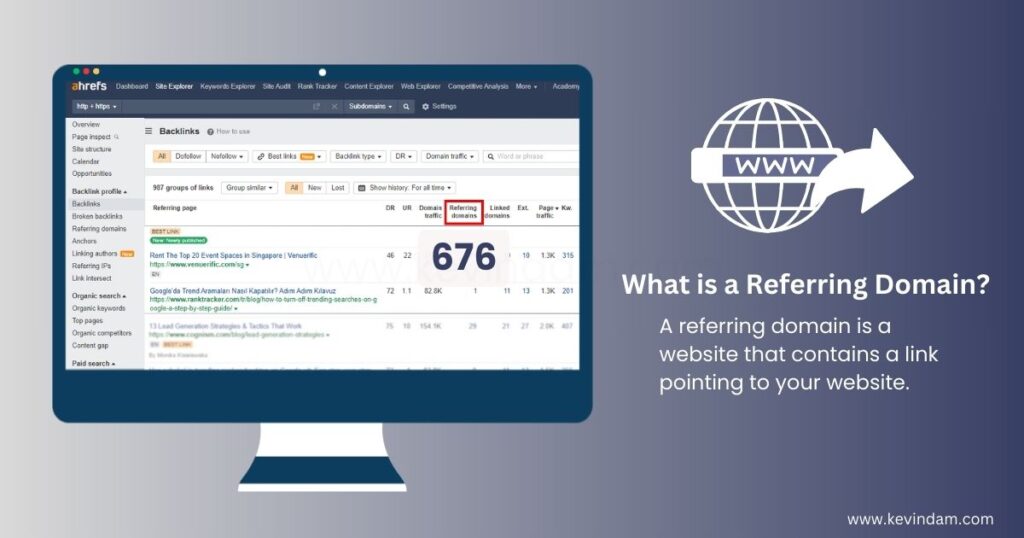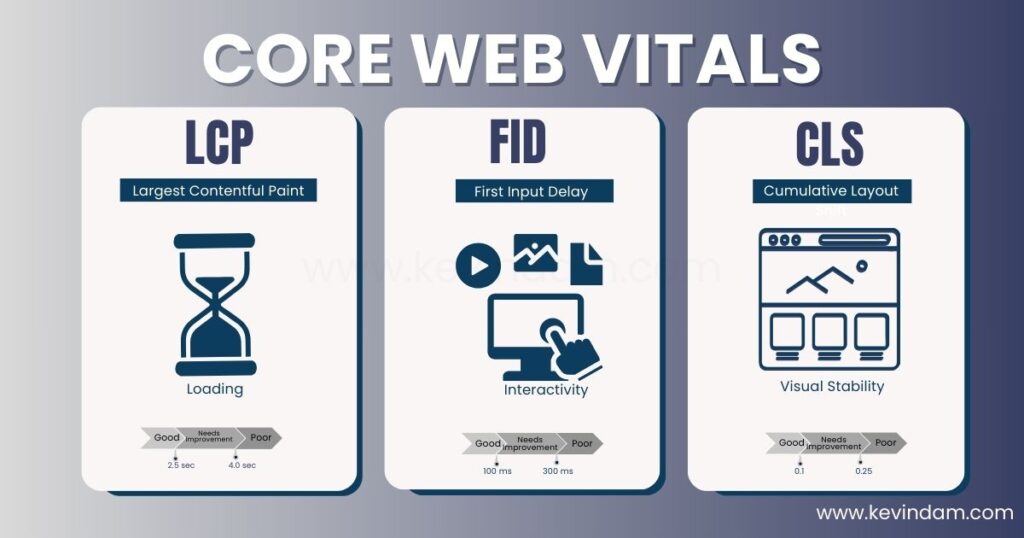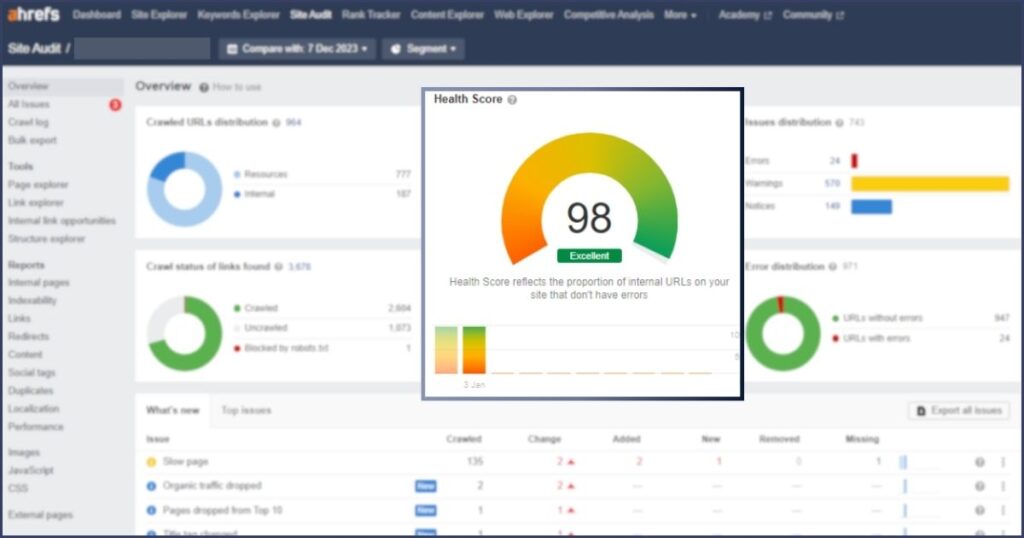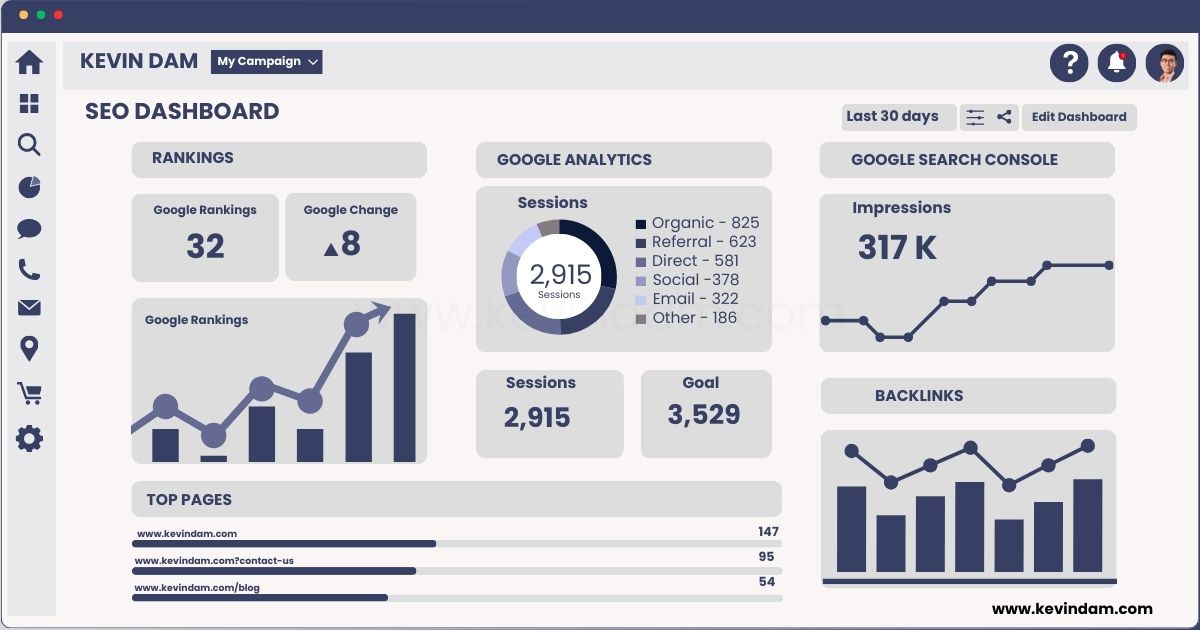
Last Updated July 18, 2024
SEO Metrics to Track: A Comprehensive Guide to Monitoring Your Progress

A strong online presence is crucial for business success. Navigating a website without monitoring the right SEO metrics is like steering a ship with a broken compass. It empowers website owners to measure the efficacy of their SEO strategy, directly relating to the visibility and engagement a website garners from potential customers.
Given the frequent search engine updates, website owners must comprehend these metrics to gain valuable insights into their content and technical enhancements, as well as to enhance organic traffic and conversion rates.
In this detailed guide, we’ll look at the important SEO numbers you should keep an eye on to check how well your website is doing and plan your way to online success. Let’s see what you need to watch, so you can track your progress and change your plans as needed.
SEO Metrics Evolution
The transition from simple to complex metrics in SEO reflects the evolution of search engines and user expectations, pushing for a more nuanced SEO approach. Visual stability, engagement, and relevance are key to modern SEO strategies.
| Era | SEO Focus |
| Early Digital Age | Keyword Density |
| Contemporary SEO | Search Intent, Domain Authority, Core Web Vitals |
Essential SEO Metrics to Monitor

Keeping an eye on SEO metrics allows website owners and marketers, including me, to fine-tune SEO strategies and make informed decisions to boost ranking on search engine results pages (SERPs). These metrics also help identify issues that could be impairing site performance, as well as opportunities to enhance the user experience and content relevance.
Actively measuring the right parameters through SEO Tools helps businesses drive more organic traffic, improve conversion rates, and stay ahead of the competition. Here are the essential SEO metrics you should keep an eye on:
Organic Traffic
Organic traffic is the lifeblood of most websites and a testament to your SEO strategy’s success. It refers to visitors who land on your site through non-paid search engine results. Analysing organic traffic gives you insights into your website’s visibility and potential for growth. To track organic traffic using Google Analytics:
- Log in to your Google Analytics account.
- Go to Acquisition > All Traffic > Channels.
- Look for the ‘Organic Search’ segment to view your organic traffic data.
Screenshots showcasing this process can visually guide users through each step, making it easier to understand.
Keyword Rankings and Top Keywords Ranked
Understanding your website’s ranking for target keywords is essential in SEO. The ranking of keywords directly shows how visible your site is for specific search terms and its potential to draw in targeted traffic. High-performing keywords also reveal the content that resonates with your audience. To monitor these rankings:
- Utilise keyword tracking tools like Ahrefs, SEMrush, or Moz.
- Enter your domain and target keywords to see their current positions.
- Analyse the data over time and compare it with competitors, which can be displayed in a comparison table to highlight trends and ranking improvements.
Click-Through Rate (CTR)
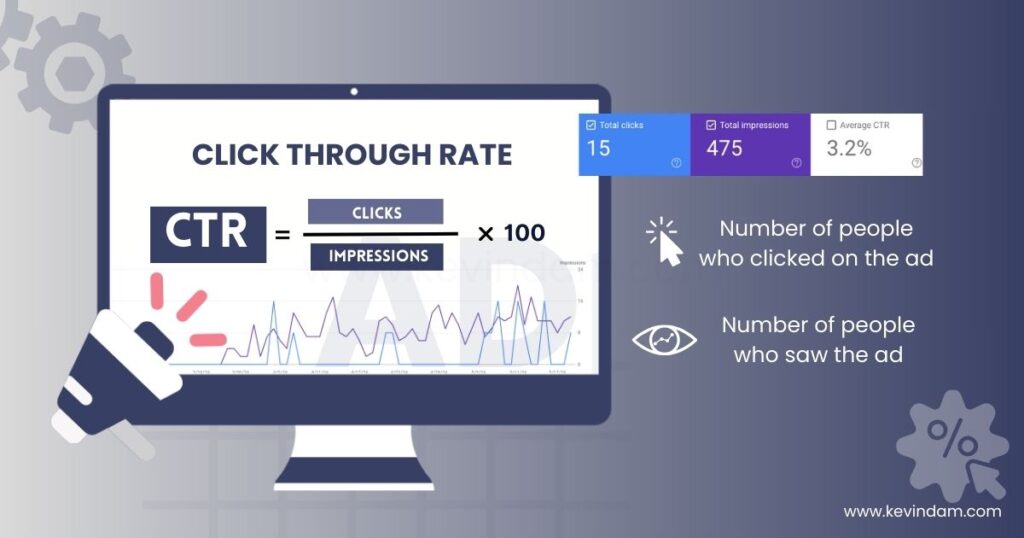
The Click-Through Rate is an important engagement metric indicating how compelling your listings are in the eyes of searchers. A higher CTR means users found your title and description relevant and clicked on your website. To enhance CTR:
- Create captivating titles that align with search intent.
- Write enticing meta descriptions using relevant keywords.
- Use rich snippets, where appropriate, to add more context.
Optimising for CTR is a continuous process, requiring A/B testing of different titles and descriptions to find the most effective combination.
Search Visibility
Search visibility depicts how often your website appears for its target keywords in search results. This metric offers a bird’s-eye view of your overall SEO performance. Track how rankings change over time for a broad set of keywords to evaluate search visibility. Graphical representations of these trends can provide a quick understanding of whether your SEO efforts are improving your site’s search presence.
Traffic Value
Traffic Value assesses not just the quantity of your traffic but the quality by indicating how much the traffic is worth if it were to be purchased through a paid search. This metric helps to prioritise SEO efforts by identifying:
- The most valuable sources of traffic.
- Visitor segments that demonstrate higher engagement or conversion potential.
Using Google Analytics, you can segment your traffic by source to analyse the value of users from different channels.
Organic Traffic Conversion
Arguably the most critical measure of SEO success, organic traffic conversions track whether visitors complete desired actions such as purchases, sign-ups, or contact form submissions. To set up conversion tracking:
- Go to the Goals section in Google Analytics.
- Define your specific objectives and enter the details.
- Monitor the conversion rates from organic traffic to gauge the effectiveness of SEO in achieving business goals.
Referring Domains and Backlinks
Backlinks and referring domains are powerful indicators of a site’s authority and trust. Counting the number of distinct domains that link back to your site, along with the total backlinks, can provide an understanding of your website’s reputation in the eyes of search engines. To track these:
- Use backlink checker tools like Ahrefs or Majestic SEO.
- Input your website URL to get a list of backlinks and referring domains.
- Keep a table of top referring domains to monitor patterns and growth in backlink profiles.
Number of Indexed Pages and Pages Crawled Per Day
The volume of indexed pages and the frequency of crawls are significant metrics that show search engines’ behaviour in accessing your site’s content. More indexed pages can increase search visibility, while consistent crawling indicates a healthy, accessible website. Check these metrics in Google Search Console to ensure your pages are regularly recognised and indexed.
Index Coverage Errors
Index coverage errors can hinder your website’s performance in SERPs. These issues may prevent pages from being indexed, thus making them invisible to searchers. Google Search Console is an excellent tool for spotting such errors. Webmasters can identify and correct problems limiting a website’s search potential by navigating to the’ Coverage’ section.
Core Web Vitals
Google’s Core Web Vitals are crucial for measuring user experience—a significant factor in SEO. The key vitals include Largest Contentful Paint, First Input Delay, and Cumulative Layout Shift, which assess loading performance, interactivity, and visual stability, respectively. Tracking these can be done with tools like Google PageSpeed Insights, which provides scores and actionable recommendations for improvement.
Website Health Score and Average Page Load Time
A Website Health Score is an aggregated metric assessing technical SEO aspects like page speed, mobile-friendliness, and security. Simultaneously, average page load time directly influences user engagement and SEO rankings. To optimise, consider:
- Reducing image sizes.
- Minimising JavaScript and CSS files.
- Implementing browser caching.
Tools like GTmetrix can comprehensively analyse website performance factors with detailed suggestions and a visual representation of page load times.
In drawing upon these SEO metrics and adhering to the guidelines presented, digital marketers can craft a precise and effective SEO strategy that propels their websites to the forefront of organic search.
SEO Metrics That Have Lost Relevance
The evolving landscape of Search Engine Optimisation (SEO) impacts the relevance of metrics assessing website performance. Traditionally, metrics such as bounce rate, exit rate, pages per session, and average session duration have been viewed as indicators of user engagement and website quality. However, changes in user behaviour, technological advancements, and deeper SEO insights have reshaped the metrics that truly influence SEO outcomes.
Bounce Rate
The bounce rate, which measures the percentage of visitors who navigate away from the site after viewing just one page, has been a controversial topic in the SEO community for some time. It’s become clear that a high bounce rate isn’t always indicative of a poor user experience.
For example, if a user quickly finds the information they need on a single page and departs satisfied, this would still be considered a “bounce,” despite the positive user experience. Additionally, search engines like Google have become more sophisticated and now rely more on intent satisfaction rather than oversimplified metrics like bounce rate.
Exit Rate
Exit rate tracks the percentage of users who leave a site from a particular page, which can differ from the bounce rate when a user has visited more than one page in a session. The relevance of this metric has declined because it doesn’t necessarily reflect a negative experience.
Users may exit after completing their desired action or reaching a natural endpoint, such as a confirmation or thank you page. Thus, while exit pages may offer insights for improving specific pages, they are no longer primary indicators of broader SEO performance.
Pages Per Session
Pages per session, which counts the average number of pages a user views during a single visit, has similarly decreased in significance. As content becomes more comprehensive, users can often fulfil their information needs on fewer pages, especially with the advent of long-form content and infinite scroll features. More pages per session do not automatically equate to a more engaging or SEO-friendly site; rather, it’s the engagement quality that matters most.
Average Session Duration / Time on Page
Average session duration, or time spent on a page, was once considered a measure of content quality and user interest. While these metrics can provide context about user behaviour, they’re not as reliable for SEO value as once thought. For instance, a user might leave a browser tab open without active engagement, skewing the data. Search engines are now better at detecting genuine user engagement through more nuanced signs, reducing the weightage of average session duration in their algorithms.
The emphasis in modern SEO has shifted to a holistic understanding of user experience and intent, focusing on metrics more directly tied to these areas. These transformations suggest that while the aforementioned metrics can offer insights, they should not dominate an SEO strategy or overshadow more productive focus areas, such as content relevance, mobile optimisation, and technical SEO enhancements. It’s vital for marketers to adapt their approach to prioritise metrics with a more direct impact on search visibility and user satisfaction.
Metrics Often Misunderstood or Overemphasised
Certain metrics are often either misunderstood or given undue importance. Businesses can enhance their online success by focusing on metrics that really matter. Conversions and daily page crawls are often misunderstood.
Conversions
Conversions are critical; they represent the ultimate goal of many SEO strategies, which is to drive users to complete a desired action, such as making a purchase or signing up for a newsletter. However, there are common misconceptions about conversions that require clarification.
- Not All Conversions Are Equal: Often, businesses treat all conversions alike, failing to distinguish between those that have a significant impact on the bottom line and those that do not. Prioritising quality conversions that translate into higher value is essential.
- Conversion Attribution: There is a tendency to attribute conversions to the last click, ignoring the role of multiple touchpoints in the customer journey. A comprehensive understanding of conversion paths is important for accurate attribution.
- Conversions versus Traffic: High traffic volume does not always equate to high conversions. Targeting relevant audiences and matching search intent is more important than the number of visitors.
- Influence of Micro-Conversions: Small actions, or micro-conversions, can be indicators of progressing towards a major conversion but are often overlooked. Tracking and optimising for these may enhance the overall conversion rate.
Pages Crawled Per Day
The number of pages crawled daily by search engine bots is another frequently misinterpreted metric.
- More Crawling Doesn’t Mean Better Ranking: A common misconception is that if a site is crawled extensively, it will naturally rank higher. However, more frequent crawling does not guarantee improved rankings; it merely reflects the search engine’s process of indexing the site.
- Crawling Priorities: Search engines prioritise the crawling of pages that are considered more important. The emphasis should be on ensuring that high-priority content is crawlable rather than increasing the overall number of pages crawled.
- Technical Health Over Quantity: It’s the technical health and crawlability of a site that matters most. Issues like broken links or duplicate content can negatively impact crawling efficiency, so resolving these is crucial.
By understanding and correctly applying insights from these metrics, businesses can fine-tune their SEO strategies to focus on what truly matters for improving search visibility and achieving their objectives.
How to Effectively Use SEO Metrics for Better Strategy
Effectively using SEO metrics is the backbone of a successful SEO strategy. It’s not enough to simply gather data; what’s critical is the ability to interpret and employ these metrics to drive strategic decisions. Understanding and leveraging key SEO metrics help businesses create smarter and more efficient campaigns that not only increase organic traffic but also improve overall ROI.
SEO metrics can reveal valuable insights into various aspects of a website’s performance, from how users are engaging with content to how well pages are ranking for target keywords. Metrics such as organic search traffic, conversion rate, bounce rate, Click-through rate (CTR), and keyword rankings provide a multidimensional view of SEO performance. Combining these with engagement metrics, such as time on page and pages per session, can offer a clear picture of user behaviour and content effectiveness.
For a more technical perspective, SEO metrics like crawl errors found in Google Search Console or load times highlighted by Core Web Vitals offer a look into the site’s health and usability. These technical factors are now crucial, with search engines increasingly prioritising user experience.
To get the most out of SEO metrics, it’s important to align them with business goals, monitor changes over time, and understand the broader market context, including search intent and competitor activities. This strategic alignment ensures that SEO efforts are not just driving traffic but the right kind of traffic that will lead to meaningful business outcomes.
Integrating Metrics into SEO Strategy
To integrate metrics into your SEO strategy effectively, follow these actionable steps:
- Define Key Objectives: Identify what you intend to achieve with your SEO efforts. This could be increasing organic search traffic, improving keyword rankings, or boosting conversions.
- Select Relevant Metrics: Choose metrics that are directly linked to your objectives. For example, if you aim to enhance visibility, track search visibility and keyword rankings; if it’s about user experience, monitor Core Web Vitals and bounce rates.
- Use the Right Tools: Employ tools like Google Analytics, Google Search Console, and specialised SEO platforms to track and analyse your chosen metrics.
- Regular Analysis: Set up regular intervals to review and analyse your data. Weekly, monthly, and quarterly reports can help identify trends and areas needing attention.
- Make Data-Driven Decisions: Use the insights gained from these metrics to inform your SEO strategy. Adjust content, on-page optimisation, and technical SEO elements based on what the data tells you.
- Test and Adapt: Conduct A/B testing based on the insights and adapt your strategy according to the results. SEO is never static, so be prepared to make ongoing adjustments.
- Report and Communicate: Create clear reports to communicate the status of your SEO campaigns. Use visual aids like charts and tables to illustrate progress and areas for improvement.
Integrating these steps into your SEO process makes you more equipped to take a proactive and informed approach to your optimisation efforts.
Using Data for Informed Decision-Making
Analysing and interpreting SEO data can help you make informed decisions to optimise website content and user experience. For instance, understanding the search terms that lead visitors to your site can help tailor your content to match search intent. This leads to higher engagement, a strong signal to search engines that your content is valuable to users, potentially boosting your rankings.
Search engine algorithms are updated frequently, and competitors always enhance their SEO efforts. Thus, keeping a vigilant eye on key metrics allows you to adapt strategies to maintain or improve your search visibility.
Data should help improve user experience. Tracking metrics like Core Web Vitals helps you understand how your site performs regarding loading speeds, interactivity, and visual stability. Improvements in these areas can lead to a better user experience, favouring engagement and improving SEO performance.
- Understand search terms to tailor content for better match search intent
- Higher engagement signals content value to search engines
- Keep track of key metrics to adjust strategies
- Use data to enhance user experience
- Monitor Core Web Vitals for loading speeds, interactivity, and visual stability
- Improvements lead to better user experience and SEO benefits
Conclusion
To effectively enhance your SEO strategy, it’s necessary to track various key SEO metrics. Use tools like Google Analytics and Google Search Console to gain valuable insights into your website’s performance. Key metrics to focus on include organic traffic, which assesses the percentage of visitors from search engines, and keyword rankings to determine the visibility of relevant keywords.
Monitoring your website’s conversion rate can pinpoint the effectiveness of your SEO efforts in achieving desired actions by users. The bounce rate and Click-through rate (CTR) are engagement metrics that provide clues about content relevance and alignment of search intent, while Domain Authority gives you a view of your site’s strength in search results compared to competitors.
Align these metrics with your business goals to refine your target keywords and adjust based on the shifts in search terms. That way, you can maintain and improve your SEO performance over time, always staying one step ahead in the SEO game.

